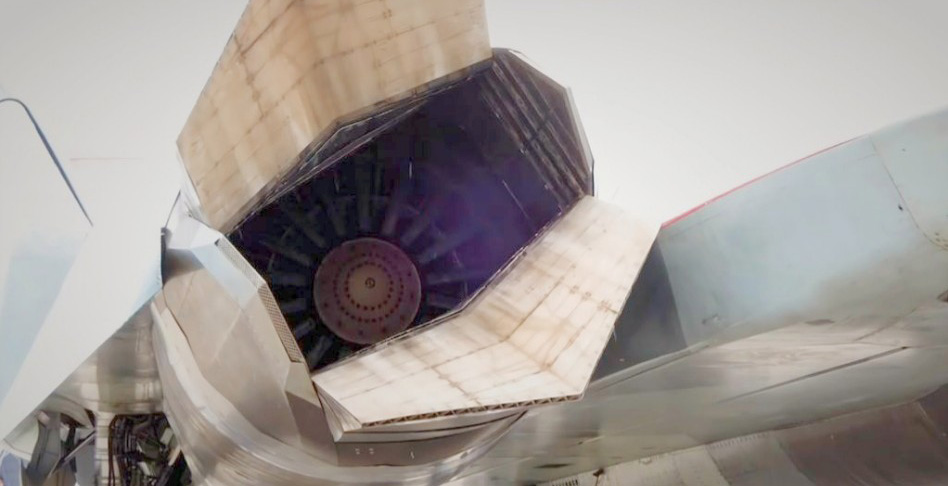Russia Starts Testing Flat-Nozzled Su-57
11 December, 2024 The prototype of the Su-57 fighter jet "052" with a flat nozzle installed. Photo: Russia 1 TV channel The Su-57 fighter jet prototype with a new flat nozzle has begun undergoing testing.
This was reported by Russian television. These tests involved the second prototype of the Su-57 "052" fighter jet, which is performing test flights using a new type of nozzle. It is not yet known for what purposes these tests are being conducted, as the flat nozzle was originally planned to be installed on Russian S-70 "Hunter" drones, but the test samples were equipped with a conventional nozzle.
 A similar nozzle is used on production U.S. F-22 Raptor fighters equipped with Pratt & Whitney F119 engines with a controlled thrust vector to improve maneuverability at low speeds.
A similar nozzle is used on production U.S. F-22 Raptor fighters equipped with Pratt & Whitney F119 engines with a controlled thrust vector to improve maneuverability at low speeds.
In addition, back in 2021, it was reported that the Su-57 fighter would be fitted with a narrow nozzle from the first Hunter prototype, so it is currently impossible to say for which platform these tests are being conducted. Nevertheless, the Russian industry is trying to develop a new engine for the Su-57, which is positioned as the second-stage engine of "Izdeliye 30" and will allow the aircraft to significantly improve both its flight performance and reduce its visibility. Currently, prototypes and production aircraft use the AL-41F1/S engine, which is also installed on heavy fighters such as the Su-35.
 The prototype of the Su-57 fighter jet "052" with a flat nozzle installed.
The prototype of the Su-57 fighter jet "052" with a flat nozzle installed.
Photo: Russia 1 TV channel
It should be noted that, despite the well-known myth of all-angle control of the thrust vector along the axis, Soviet and Russian specialists were unable to fully realize this on production engines, so for the AL-41F1S engine, the control angle is limited to a maximum angle of +-20? in the vertical plane. This is also reflected in the flat nozzle installed in the prototype, which is not the same as the one used in the F-22 fighter, but has a certain angle.
 Flying laboratory Su-27LL-UV(PS). Photo: Sukhoi Design Bureau
Flying laboratory Su-27LL-UV(PS). Photo: Sukhoi Design Bureau
Despite the fact that Russian propaganda presents these tests as a revolutionary solution, similar tests were conducted during the Soviet era on the Su-27LL-UV(PS) aircraft, a flat-nozzle thrust vector control flying laboratory that was installed with the AL-31FU engine.
It is currently unknown exactly when the tests began, as the Russian Defense Ministry and Sukhoi Design Bureau have been planning to complete the development of the second stage engine for more than 10 years, but have been postponing the deadline due to constant problems and shortcomings.